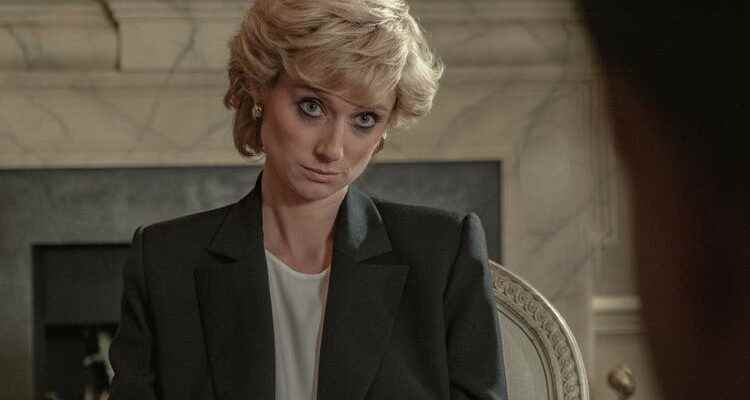With the Netflix series “The Crown” the view of Queen Elizabeth II has changed. Season 5 is about the scandals surrounding Diana and Charles. But have these actually harmed the monarchy?
Deer look and pugnacity: Elizabeth Debicki plays Princess Diana in “The Crown”, season 5.
It has been just two months since Britain put on an unprecedented spectacle of reverence and respect for the Queen’s farewell. In view of the great sadness over the death of the Queen, whose reign spanned more years than the lives of many Britons, many a supposed certainty of the monarchy has faltered. In view of Queen Elizabeth II’s advanced age, it was to be expected that the series “The Crown” about her life would be completed posthumously. The timely broadcast of the fifth season seems like an echo chamber of historical events. The queen is dead, long live the queen!
So one is initially inclined to attribute the harsh criticism publicly practiced in advance by political and film celebrities, which has never been seen before in any season, to the pain of parting. In any case, the accusation made by Judi Dench (“Mrs Brown”) that sensationalism prevails at the expense of historical accuracy could not be confirmed. Screenwriter Peter Morgan has conceived The Crown as a docu-drama that balances fact and fiction since the series began six years ago.
As far as Prince Philip’s “friendship” is concerned with the Countess of Mountbatten of Burma (played by the beautiful Natascha McElhone), which the media already interpreted as an “affair” in the run-up to the new season, it has nothing speculative about it. At best, it could be read as a sign of the estrangement between Elizabeth and the Duke of Edinburgh.
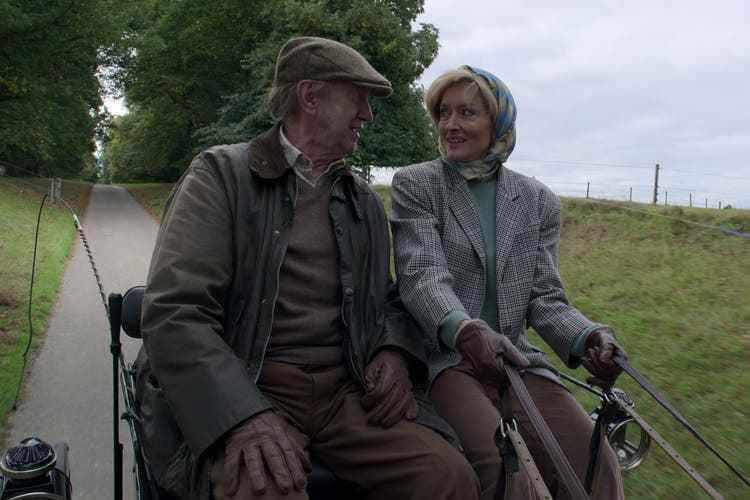
Jonathan Pryce as Prince Philip and Natasha McElhone as the Countess of Mountbatten of Burma.
The scandal years 1991 to 1997
“The Crown” tells as close to the truth as possible and as freely as necessary. From the beginning of the series, it was important to avoid the style of a tiresome chronicle and to captivate the audience with a royal story including a family soap. This recipe works surprisingly well this time, too, apart from the pointlessly drawn out episode that chronicles the rise of Mohamed al-Fayed (Amir el-Masry, Salim Daw), the father of Diana’s lover Dodi (Khalid Abdalla). kicks like curd.
What this fifth (and penultimate) season traces are the scandalous years between 1991 and 1997. During this period, three divorces (of Charles and Diana, Princess Anne, Prince Andrew) took place before the eyes of the public. There was also a devastating fire at Windsor Castle.
So there aren’t any big surprises to be expected here, which makes this season’s emphasis on the subtext all the more important. The Queen’s Christmas speech in 1992 was unusually candid, when she spoke of an “annus horribilis” and hinted at how the media reports on members of the royal family were increasingly affecting her. The worst was yet to come.
However, as the new season also makes clear, Charles and Diana topped everything the media could ever have dreamed up with television confessions and the noise of battles in an almost stupendous way. From “Tampongate” with Charles (Dominic West) and Camilla (Olivia Williams) to Diana’s bulimia to the little toe-sucking scandal thanks to Sarah Ferguson, there’s nothing more to report that we haven’t already received from the media.
Peter Morgan’s script tries to spice things up. For example, he sends Prince Charles, who is tired of waiting forever as heir to the throne, to 10 Downing Street, where he knocks for help. Former Prime Ministers John Major and Tony Blair quickly denied it and attacked the new King Charles III. moral support straight away: the scenes in which Charles allegedly called for political support in order to persuade his mother to abdicate would actually be suitable to cement the impression of a disloyal heir to the throne.
Prince William is annoyed
The re-enactment of the famous Diana interview – which culminated in the sentence “There were three of us in this marriage so it was a bit tight” regarding Charles and Camilla’s affair – again prompted Prince William to issue an outraged note.
This is astonishing not only because the actual conversation is accessible on the Internet, but also because Buckingham Palace has so far been politely silent on the question of whether “The Crown” was even acknowledged. After all, the methods of the interviewer Martin Bashir, who has since fallen out of favor, are critically examined here: The BBC journalist had set a trap for Diana and used forged documents to get her to talk.
The new episodes also make it shockingly clear how the sons William and Harry became collateral damage in this parents’ war and how selfishly Diana instrumentalized her older son.
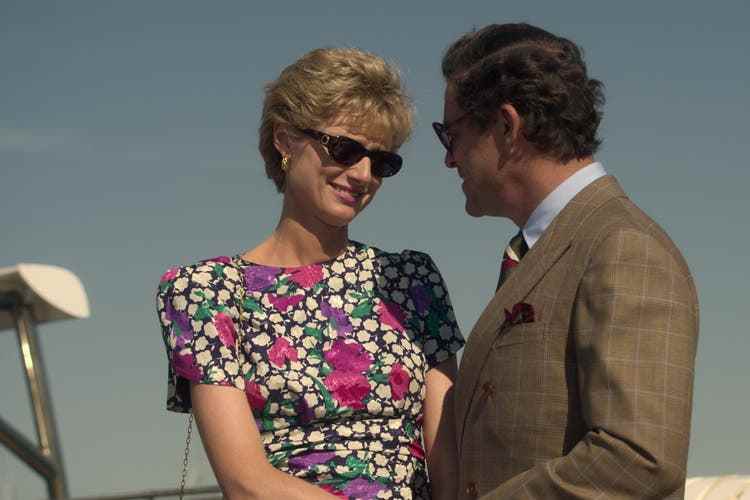
The staging of a happy marriage went wrong: Elizabeth Debicki and Dominic West as Diana and Charles.
The scandals were also a liberation
To what extent have all the scandals and self-exposure and the resulting blockades of the Queen damaged the reputation of the monarchy? Would the Queen, who up until the 1990s firmly placed tradition above change, have continued to enforce her principles, had the public attention not been so great and the visible moral decay so abysmal?
She would probably have stuck to her convictions, as the new episodes suggest. In retrospect, it seems quite plausible that the royal offspring increasingly used the scandal as a tried and tested means of pressure in the internal struggle for more self-determination. Central to this is the (extremely sad) ongoing discussion between Elizabeth and her sister Margaret (Lesley Manville). The queen, with a sense of duty and a stiff upper lip, put a stop to it every time she tried to break out of the golden cage.
From the outset, The Crown raised justifiable doubts that Elizabeth would ever endure the suffering she has inflicted over the years on those family members who chose to live differently than duty, pride and the Anglican Church dictated. How difficult it must have been for the family members to have to watch her in contrast as she always tried to benevolent to the whole country.
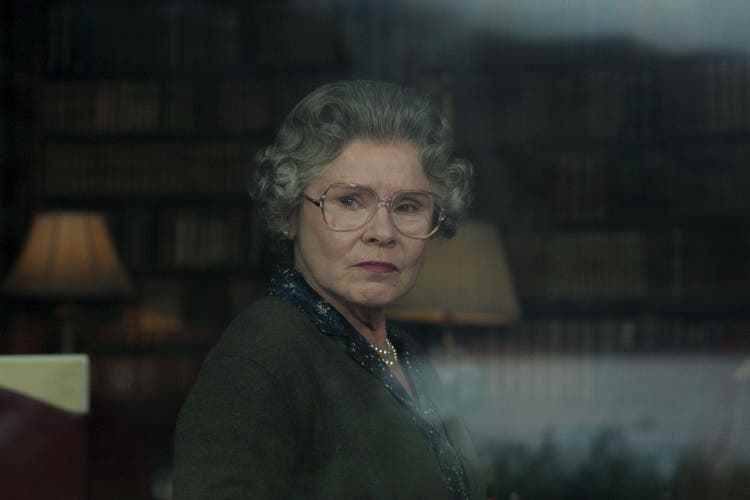
Imelda Staunton takes over the reins for the last two seasons.
Actors change one last time
In the new season, Imelda Staunton takes on the leading role of the queen. She initially irritates with her underperformance: the actress does not allow herself any introspection, let alone empathy. This shows once again what a smart move it was to change the actors every two seasons. That looks fresher and more authentic than painting deep wrinkles and dark circles on your face. Staunton gives an impenetrable face to what is probably Elizabeth’s most difficult years, her protagonist clearly contrasting with Claire Foy’s still uncertain heir to the throne or Olivia Colman’s middle-aged sovereign queen.
This new ensemble, which will also contest the sixth and final season, also has a congenial cast with Elizabeth Debicki: The Australian doesn’t even try to wring new facets from one of the greatest icons of the 20th century in the role of Diana. She brings the Princess of Wales to life between glamor and self-destruction, simply and deceptively real.
The scandals and affairs passed. What remains? A touch of transience and the question of the need for modernization of the monarchy run through this season. The Prime Minister at the time, John Major (Jonny Lee Miller), made the start when he asked the now 65-year-old Queen whether her yacht “Britannia”, which was in need of an overhaul, could not be refloated with funds from the royal coffers instead of with taxpayers’ money.
Elizabeth’s answer spans the whole contradictoriness of a life dedicated to the public – between privileges and the corset of a system that protects her role not least at the expense of her person: When she came to the throne, Elizabeth said with a trembling voice, everyone had their palaces – Windsor, Balmoral, Sandringham – already bore the hallmarks of their predecessors. Only the “Britannia” she really “could make her own”. The ship that Tony Blair (Bertie Carvel) later pulled out of service against the express wishes of the Queen was Elizabeth’s only escape and home. But who can be served by a monarchy that does not even support its supreme representative?
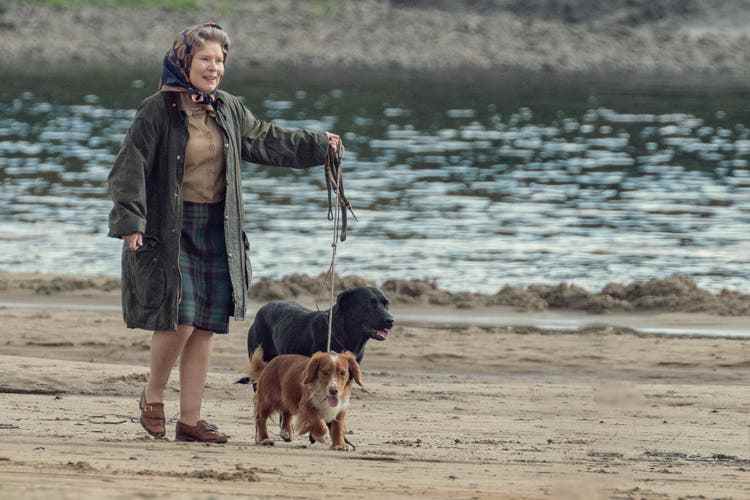
Last season is about Diana’s accidental death
The question of the monarchy’s right to exist will also haunt the sixth season, for which Diana’s accidental death was saved. It will be interesting to see the conclusion in the discussion about the struggle between royal traditions and the demands of modernity.
After Diana’s death, it looked as if Queen Elizabeth II would never recover from allegations at the time that she had reacted indifferently and inhumanely. In the days of mourning, the British recently refuted this image.
“The Crown” shows how much the view of Queen Elizabeth II has changed from the 1990s to the present day. Socio-political moods can change diametrically: those who were once thought to be bad are suddenly good guys again.
«The Crown», season 5, 10 episodes of around 60 minutes each, on Netflix.
